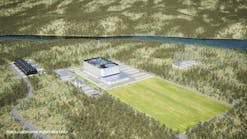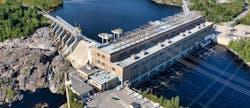By Kathy Hitchens, Special Projects Editor for Microgrid Knowledge. MGK and EnergyTech are both part of Endeavor Business Media.
Over the next decade, Mike Bakas, executive vice president at Ameresco, thinks that energy business models will evolve significantly. As a lead up to Microgrid 2023, happening two weeks from now in Anaheim, Bakas and Elisa Wood, editor-in-chief of Microgrid Knowledge, recently discussed how these changes will impact the microgrid market.
One of the biggest impacts Bakas sees is that the current energy-as-a-service (EaaS) business model will evolve.
Energy-as-a-service is a unique delivery vehicle for energy services, Bakas said. He explained that with EaaS, a third party, such as Ameresco, develops, designs, owns and operates an energy system that delivers energy to the customer.
In this scenario, the customer doesn’t have to worry about out of budget capital allocation, Bakas said. “All they do is continue to receive the energy that they need to function and to grow their system.”
Wood noted that EaaS is a great way to de-risk a project.
Bakas agreed. He added that EaaS “allows that customer to stay out of the utility business, which typically is not core to them.”
Resiliency as a bolt on
Bakas believes that energy-as-a-service will soon evolve to provide not only the energy, but some level of guaranteed resilience as well. “Resiliency will be a bolt on, or expansion of that service,” Bakas said, and it will likely be achieved through N-plus-one configurations or redundancy.
For example, developers could create campus environments that certain mission-critical organizations would be attracted to because of the level of guaranteed resiliency that’s offered.
Bakas noted that the risks associated with this new model won’t be for developers that are faint of heart. However, he said, “it would not surprise me at all to see [the commoditization of resilience] become more mainstream over the next decade.”





